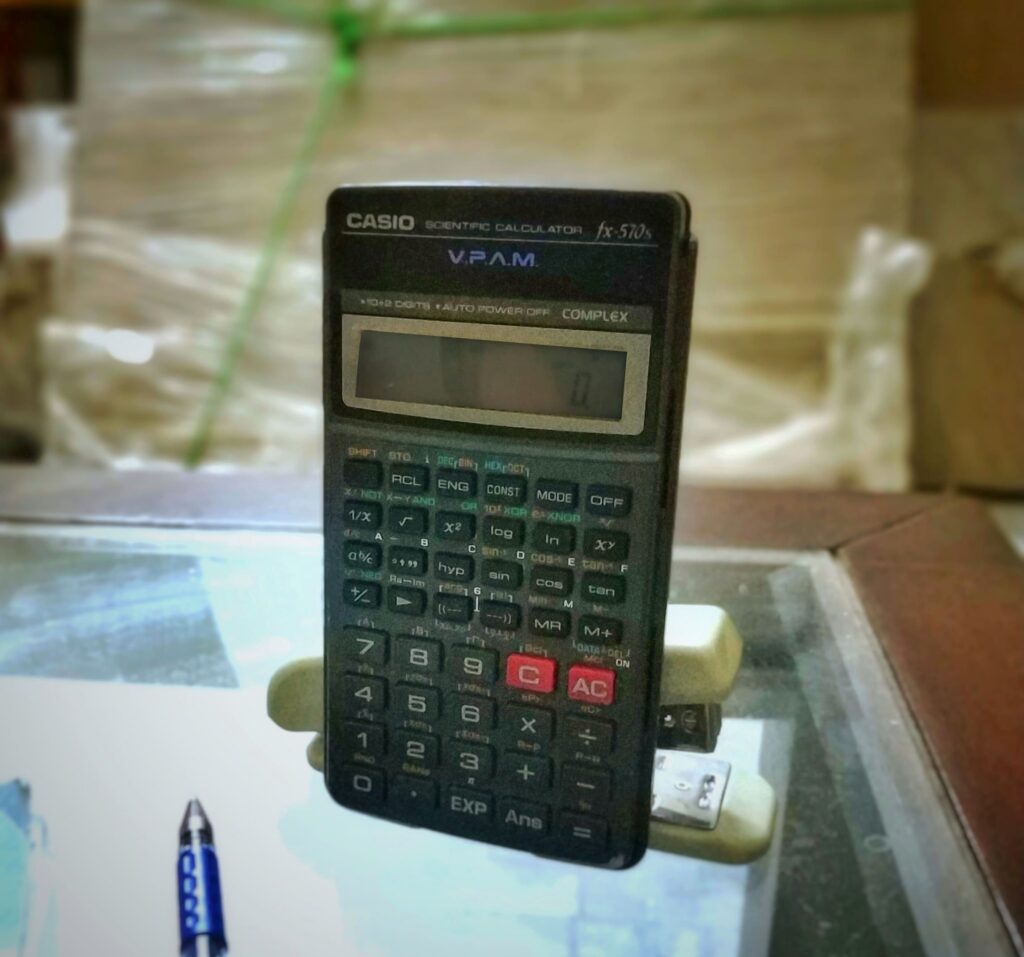The Casio fx-500 is a vintage arithmetic calculator that emerged during the 1970s, a transformative era for personal computing devices. Although specific details about its precision, number of functions, and key count remain elusive, the fx-500 embodies the simplicity and functionality that defined early electronic calculators. Its design and features reflect the technological advancements of the time, making it a fascinating piece of computing history.
Design and Display
The Casio fx-500 features an LED (light-emitting diode) display, a hallmark of calculators from this period. LED displays were bright and easily readable, though they consumed more power compared to later LCD (liquid crystal display) technology. The calculator’s build is compact and durable, with a minimalist design that prioritized functionality over aesthetics. The keys are likely arranged in a standard layout, with numeric keys and basic arithmetic operators in an accessible format.
Algebraic Logic
The fx-500 operates on algebraic logic, which means it processes mathematical expressions in the order they are entered, following standard arithmetic rules. This was a significant improvement over earlier calculators that relied on reverse Polish notation (RPN), which required users to input operations in a less intuitive sequence. Algebraic logic made the fx-500 more user-friendly, especially for students and professionals who needed quick and accurate calculations.
Functions and Precision
While the exact number of functions and the precision of the fx-500 are unknown, it likely supported basic arithmetic operations (addition, subtraction, multiplication, and division) as well as more advanced functions such as square roots, percentages, and possibly memory storage. Calculators of this era typically offered 8 to 12 digits of precision, which was sufficient for most everyday calculations.
Historical Context
The 1970s marked the rise of handheld electronic calculators, which began to replace mechanical adding machines and slide rules. Casio, a Japanese electronics company, was at the forefront of this revolution, producing affordable and reliable calculators for a growing market. The fx-500 was part of this wave of innovation, providing users with a portable and efficient tool for mathematical computations.
Legacy
Although the Casio fx-500 has been surpassed by modern calculators with advanced features such as graphing capabilities, programmable functions, and high-resolution displays, it remains a noteworthy artifact of the early days of electronic computing. Collectors and enthusiasts value the fx-500 for its historical significance and its role in shaping the way we perform calculations today.
Conclusion
The Casio fx-500 is a testament to the ingenuity and progress of the 1970s calculator industry. While its technical specifications may be shrouded in mystery, its impact on the development of handheld computing is undeniable. Whether as a functional tool or a nostalgic collectible, the fx-500 continues to hold a special place in the history of technology.

